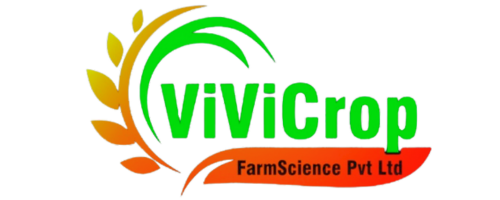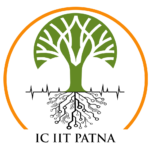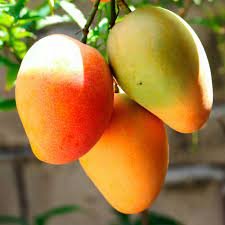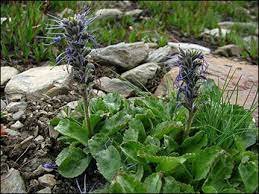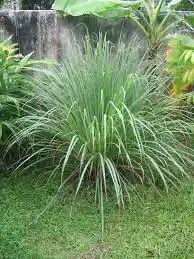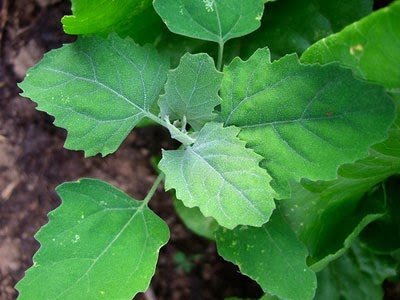Lotus Stem Nutrition Requirements
Nutrition required by Lotus Stem at each stage of its life cycle.
SOIL PREPARATION

Soil Preparation
Soil preparation is crucial for successful Lotus Stem (Kamal Kakdi) cultivation. Here's a method for soil preparation and the nutrition requirements at the soil preparation stage:
**Soil Preparation Method:**
1. **Site Selection**: Choose a site with full sun exposure and nutrient-rich soil. Lotus stems thrive in shallow water, so select a location with a water depth of about 6 inches (15 cm) to 2 feet (60 cm).
2. **Soil Testing**: Conduct a soil test to determine the pH and nutrient levels of the soil. Lotus plants prefer slightly acidic to neutral soil with a pH range of 5.5 to 7.0.
3. **Tilling**: Till the soil thoroughly to a depth of about 6 to 8 inches (15 to 20 cm) to loosen it and improve drainage. Remove any weeds, rocks, or debris from the area.
4. **Adding Organic Matter**: Incorporate well-rotted organic matter such as compost or aged manure into the soil to improve its fertility and structure. This helps retain moisture and provides essential nutrients for plant growth.
5. **Fertilization**: Based on the results of the soil test, apply a balanced fertilizer or a fertilizer high in phosphorus (P) to promote root development. Follow the recommended application rates based on the specific fertilizer formulation and the nutrient needs of Lotus plants.
6. **Adjusting Soil pH**: If necessary, adjust the soil pH to the optimal range for Lotus plants by adding lime to raise pH or elemental sulfur to lower pH. Follow the recommended application rates based on the soil test results.
7. **Leveling and Smoothing**: Level the soil surface and remove any large clumps or bumps to create a uniform planting bed.
8. **Watering**: After soil preparation, thoroughly water the area to settle the soil and ensure proper moisture levels for planting Lotus stems.
**Nutrition Requirements at Soil Preparation Stage:**
1. **Nitrogen (N)**: Lotus plants have moderate nitrogen requirements. Incorporate nitrogen-rich organic matter into the soil during preparation to provide a gradual release of nitrogen for plant growth.
2. **Phosphorus (P)**: Phosphorus is essential for root development and overall plant vigor. Use a fertilizer high in phosphorus or incorporate phosphorus-rich organic matter into the soil to meet the needs of Lotus plants during soil preparation.
3. **Potassium (K)**: Potassium helps improve plant tolerance to environmental stress and promotes overall plant health. Use a fertilizer containing potassium or add potassium-rich organic matter to the soil during preparation to support Lotus plant growth.
4. **Micronutrients**: Ensure the soil contains sufficient levels of essential micronutrients such as iron, manganese, zinc, and copper for healthy Lotus plant growth. Incorporating organic matter can help provide a balanced supply of micronutrients.
By following these soil preparation methods and meeting the nutrition requirements at the soil preparation stage, you can create optimal growing conditions for Lotus Stem (Kamal Kakdi) cultivation and promote healthy plant growth and development.
Early Growth (Germination to Establishment)

Early Growth
During the early growth stages of lotus stem (Kamal Kakdi), proper nutrition is essential for healthy plant development and establishment. Here are the general nutrient requirements for lotus stem during this stage:
1. **Nitrogen (N)**:
- Nitrogen is crucial for early vegetative growth, leaf development, and overall plant vigor.
- Adequate nitrogen promotes strong stem and leaf growth, which is important for lotus stems to establish themselves.
- Apply nitrogen-rich organic fertilizers or nitrogen-containing synthetic fertilizers according to soil test recommendations or general guidelines for vegetable crops.
2. **Phosphorus (P)**:
- Phosphorus is necessary for root development and early establishment of the plant.
- Adequate phosphorus supports healthy root growth, which is essential for the lotus stem to anchor itself and absorb nutrients efficiently.
- Apply phosphorus-rich fertilizers, such as phosphorus rock phosphate or phosphorus-containing synthetic fertilizers, as recommended based on soil test results or general guidelines.
3. **Potassium (K)**:
- Potassium plays a role in overall plant health, water regulation, and disease resistance.
- Adequate potassium helps lotus stems develop strong stems and resistance to environmental stresses.
- Apply potassium-rich fertilizers, such as potassium sulfate or potassium chloride, according to soil test recommendations or general guidelines.
4. **Calcium (Ca)**:
- Calcium is essential for cell wall formation and structural integrity in plants.
- Adequate calcium helps prevent disorders such as blossom end rot in lotus stems.
- Apply calcium-rich fertilizers, such as calcium carbonate or gypsum, if calcium deficiency is indicated by soil tests or observed symptoms.
5. **Magnesium (Mg)**:
- Magnesium is a component of chlorophyll and plays a role in photosynthesis and overall plant growth.
- Adequate magnesium supports healthy leaf development and photosynthesis in lotus stems.
- Apply magnesium-containing fertilizers, such as magnesium sulfate (Epsom salt), according to soil test recommendations or general guidelines.
6. **Micronutrients**:
- Ensure adequate micronutrient availability, including iron, manganese, zinc, copper, boron, and molybdenum, for proper lotus stem growth and development.
- Use micronutrient-rich fertilizers or foliar sprays as needed, based on soil test results or observed deficiencies.
It's important to adjust nutrient applications based on soil test results to avoid deficiencies or excesses, which can negatively impact lotus stem growth and development during the early stages. Additionally, maintaining proper soil moisture and pH levels is crucial for nutrient uptake and overall plant health.
Tillering Stage (Shoot Development)

Tillering Stage
During the tillering stage, which is the early shoot development stage in lotus stem (Kamal Kakdi) plants, proper nutrition is essential to support healthy growth and development. While specific nutrient requirements can vary based on factors such as soil fertility, climate, and cultivar, the following are general guidelines for the nutritional requirements of lotus stem plants during this stage:
1. **Nitrogen (N)**: Nitrogen is essential for promoting vegetative growth and overall plant vigor during the tillering stage. Adequate nitrogen promotes the development of healthy shoots and leaves. Nitrogen can be applied through organic sources such as compost or manure, or through synthetic fertilizers.
2. **Phosphorus (P)**: Phosphorus plays a crucial role in root development and early shoot establishment. It aids in energy transfer within the plant and promotes strong root systems, which are essential for nutrient uptake and overall plant health. Phosphorus can be provided through phosphorus-rich fertilizers or organic amendments.
3. **Potassium (K)**: Potassium is important for overall plant health and plays a role in regulating water uptake, nutrient transport, and disease resistance. It also contributes to the development of strong stems and improves plant tolerance to stress conditions. Potassium can be supplied through potassium-rich fertilizers or organic sources like wood ash.
4. **Micronutrients**: In addition to the primary macronutrients (nitrogen, phosphorus, and potassium), lotus stem plants require various micronutrients for optimal growth and development. These include calcium, magnesium, sulfur, iron, manganese, zinc, copper, boron, and molybdenum. Micronutrient deficiencies can be corrected through the application of micronutrient-rich fertilizers or soil amendments.
To ensure proper nutrition during the tillering stage of lotus stem plants, it is essential to conduct soil tests to determine nutrient levels and pH, which can guide fertilizer application rates and adjustments. Additionally, maintaining proper soil moisture and providing adequate sunlight are also important factors for healthy growth during this stage. Regular monitoring of plant growth and nutrient status can help identify any deficiencies or imbalances and allow for timely corrective measures to be taken.
Flowering

Flowering
During the flowering stage of Lotus Stem (Kamal Kakdi), the plant requires specific nutrients to support healthy flower development and overall growth. Here are the key nutrition requirements at the flowering stage for Lotus Stem:
1. **Phosphorus (P)**: Phosphorus is crucial for flower formation and development. It plays a significant role in the energy transfer processes necessary for flowering. Adequate phosphorus levels support robust flower production and enhance flower quality. Ensure the soil contains sufficient phosphorus through the use of phosphorus-rich fertilizers or organic amendments.
2. **Potassium (K)**: Potassium is essential for flower and fruit development in plants. It regulates water uptake and nutrient transport within the plant, contributing to flower quality and yield. Adequate potassium levels support strong and healthy flower stems and improve overall flower appearance. Apply potassium-rich fertilizers or organic sources to ensure the plant's potassium needs are met during the flowering stage.
3. **Nitrogen (N)**: While nitrogen is essential for overall plant growth and vigor, excessive nitrogen during the flowering stage can promote vegetative growth at the expense of flower production. Therefore, it's important to provide a balanced nitrogen supply to maintain plant health without stimulating excessive foliage growth. Monitor nitrogen levels in the soil and adjust fertilizer applications accordingly to support healthy flower development.
4. **Micronutrients**: Ensure the soil contains adequate levels of essential micronutrients such as iron, manganese, zinc, and copper. These micronutrients play critical roles in various physiological processes, including flower formation and development. Address any deficiencies identified through soil testing by applying micronutrient fertilizers or organic amendments to ensure optimal flower quality and yield.
5. **Calcium (Ca)**: Calcium is essential for cell wall structure and integrity, which is important for flower development and quality. Adequate calcium levels contribute to strong and healthy flower stems and improve flower longevity. Apply calcium-rich fertilizers or organic sources to ensure the plant's calcium needs are met during the flowering stage.
6. **Magnesium (Mg)**: Magnesium is a component of chlorophyll and essential for photosynthesis. It also plays a role in flower development and quality. Ensure the soil contains sufficient magnesium through the use of magnesium-rich fertilizers or organic sources to support healthy flower production.
7. **pH Balance**: Maintain the soil pH within the optimal range for Lotus Stem cultivation, which is typically slightly acidic to neutral (pH 6.0-7.0). Proper pH balance ensures optimal nutrient availability to the plant during the flowering stage, supporting healthy flower development and overall plant growth.
By meeting these nutrition requirements and providing optimal growing conditions, you can support healthy flower development and maximize the yield and quality of Lotus Stem (Kamal Kakdi) during the flowering stage.
Matchuration & Ripening

Matchuration & Ripening
During the maturation and ripening stages of lotus stems (Kamal Kakdi), providing appropriate nutrition is essential to support healthy growth, development, and the formation of quality edible stems. Here are the basic nutrition requirements for lotus stems during these stages:
1. **Water**:
- Adequate water supply is crucial during maturation and ripening to support the development of plump and succulent stems. Maintain consistent soil moisture levels to prevent water stress, especially during hot and dry periods.
2. **Light**:
- Lotus plants require ample sunlight for photosynthesis and carbohydrate production during maturation and ripening. Ensure they receive full sun exposure for at least 6-8 hours per day to promote optimal stem growth and development.
3. **Nutrients**:
- Balanced nutrients are essential for healthy lotus stem development during the maturation and ripening stages. Key nutrients needed include:
- Nitrogen (N): Important for vegetative growth and overall plant development.
- Phosphorus (P): Necessary for flowering, fruiting, and stem development.
- Potassium (K): Essential for fruit quality, stress tolerance, and overall plant health.
- Micronutrients: Ensure availability of essential micronutrients such as iron, manganese, zinc, and copper through soil supplementation or foliar application if deficient.
4. **Fertilization**:
- Apply a balanced fertilizer with a higher proportion of potassium (K) to promote healthy stem development and ripening.
- Consider using organic fertilizers such as compost or well-decomposed manure to provide slow-release nutrients and improve soil fertility.
5. **pH Level**:
- Maintain soil pH in the range of 6.0 to 7.5 for optimal nutrient availability and uptake by lotus plants during the maturation and ripening stages.
6. **Soil**:
- Ensure well-draining soil with good organic matter content to support healthy root development and nutrient uptake.
- Mulch around lotus plants to conserve soil moisture, suppress weeds, and gradually release nutrients as it decomposes.
7. **Monitoring and Adjustments**:
- Regularly monitor plant growth, soil moisture levels, and nutrient deficiencies through visual inspection and soil testing.
- Adjust fertilizer application rates based on plant response and soil test results to meet the specific nutritional needs of lotus stems during the maturation and ripening stages.
By providing adequate water, sunlight, balanced nutrients, proper soil conditions, and regular monitoring, you can ensure healthy maturation and ripening of lotus stems, resulting in high-quality and flavorful edible stems. Adjustments to cultural practices and fertilization may be necessary based on specific soil conditions and plant responses.
Harvesting

Harvesting
During the harvesting stage of lotus stem (Kamal Kakdi), it's important to ensure that the plant has received adequate nutrition throughout its growth cycle to promote healthy development and yield. Here are the key nutrition requirements and procedures to follow at the harvesting stage:
**Nutrition Requirements:**
1. **Nitrogen (N)**: Nitrogen is crucial for promoting vigorous vegetative growth and overall plant health. It helps in the formation of proteins and enzymes essential for plant metabolism. Adequate nitrogen supply throughout the growth cycle contributes to healthy lotus stem development.
2. **Phosphorus (P)**: Phosphorus is essential for promoting root development, flowering, and fruiting in plants. It plays a key role in energy transfer and photosynthesis. Adequate phosphorus supply supports the development of strong lotus stems and improves yield.
3. **Potassium (K)**: Potassium is important for regulating water uptake, improving disease resistance, and enhancing overall plant vigor. It also plays a role in carbohydrate metabolism and protein synthesis. Adequate potassium supply promotes healthy lotus stem growth and improves resistance to environmental stresses.
4. **Calcium (Ca)**: Calcium is essential for cell wall formation and structural integrity in plants. It helps prevent disorders like blossom-end rot and supports proper fruit development. Adequate calcium supply contributes to firm and crunchy lotus stems.
5. **Magnesium (Mg)**: Magnesium is a component of chlorophyll and is essential for photosynthesis. It also plays a role in enzyme activation and nutrient metabolism. Adequate magnesium supply supports healthy lotus stem growth and improves overall plant vigor.
6. **Micronutrients**: Lotus stems also require micronutrients such as iron (Fe), manganese (Mn), zinc (Zn), copper (Cu), boron (B), and molybdenum (Mo) in small quantities. These micronutrients are essential for various metabolic processes and overall plant health.
**Procedure:**
1. **Soil Testing**: Before harvesting, conduct soil testing to assess nutrient levels and pH. Adjust soil pH if necessary to optimize nutrient availability for lotus stems.
2. **Fertilization**: Based on soil test results and nutrient requirements, apply balanced fertilizers containing nitrogen, phosphorus, potassium, and micronutrients. Follow recommended application rates and timings to ensure proper nutrient uptake by lotus stems.
3. **Irrigation Management**: Maintain adequate soil moisture levels throughout the harvesting stage to support optimal growth and development of lotus stems. Proper irrigation management helps prevent water stress and nutrient deficiencies.
4. **Weed Control**: Keep the area around lotus stems free from weeds to reduce competition for nutrients and water. Manual weeding or use of herbicides can be employed for effective weed control.
5. **Pest and Disease Management**: Monitor lotus stems for any signs of pest infestation or disease symptoms. Implement appropriate pest and disease management strategies, such as cultural practices, biological control, or judicious use of pesticides, to minimize damage and ensure healthy growth.
6. **Harvesting**: Harvest lotus stems when they reach the desired size and maturity. Use sharp tools to cut the stems carefully to avoid damage. Handle harvested lotus stems gently to prevent bruising or injury.
By following these nutrition requirements and procedures at the harvesting stage, you can ensure the production of healthy and high-quality lotus stems (Kamal Kakdi) with optimal yield.
Lotus Stem Farming Economics
Get details of Profitability and cost estimate in growing Lotus Stem per acres of Land.
SOIL PREPARATION

Soil Preparation
Soil preparation is crucial for successful bottle gourd cultivation, as it lays the foundation for healthy plant growth and high yields. Here's a guide on the soil preparation method and nutrition requirements at the soil preparation stage for bottle gourd:
### Soil Preparation Method:
1. **Site Selection**:
- Choose a well-drained site with plenty of sunlight for planting bottle gourd. Avoid areas prone to waterlogging or flooding.
2. **Soil Testing**:
- Conduct a soil test to determine the pH and nutrient levels of the soil. Bottle gourd thrives in slightly acidic to neutral soil with a pH range of 6.0 to 7.0.
3. **Clearing and Tilling**:
- Clear the planting area of weeds, rocks, and debris. Use a tiller or hoe to break up the soil and create a fine, crumbly seedbed.
4. **Amendments**:
- Based on the soil test results, amend the soil with organic matter such as compost, well-rotted manure, or leaf mold to improve soil structure, fertility, and moisture retention.
5. **Fertilization**:
- Incorporate balanced fertilizers or organic fertilizers into the soil according to the recommended rates for bottle gourd cultivation. A general guideline is to apply 1 to 2 pounds of nitrogen, phosphorus, and potassium (NPK) fertilizer per 100 square feet of planting area.
6. **Bed Preparation**:
- Create raised beds or mounds to improve drainage and prevent waterlogging. Ensure that the beds are well-compacted and leveled for uniform planting and irrigation.
7. **Mulching**:
- Apply a layer of organic mulch such as straw, hay, or shredded leaves to the soil surface to suppress weed growth, conserve soil moisture, and regulate soil temperature.
8. **Final Bed Preparation**:
- Rake the soil surface to create a smooth, level planting bed. Make shallow furrows or planting holes spaced according to the recommended planting distance for bottle gourd.
### Nutrition Requirements:
During the soil preparation stage, bottle gourd has specific nutrition requirements to support healthy plant growth and development. Here are the key nutrients needed:
1. **Nitrogen (N)**:
- Nitrogen is essential for promoting vigorous vegetative growth and overall plant health. Incorporate nitrogen-rich fertilizers or organic amendments into the soil to provide a steady supply of nitrogen for bottle gourd plants.
2. **Phosphorus (P)**:
- Phosphorus is important for root development, flowering, and fruit set in bottle gourd plants. Apply phosphorus-rich fertilizers or bone meal to the soil to support strong root growth and overall plant vigor.
3. **Potassium (K)**:
- Potassium plays a crucial role in plant metabolism, water regulation, and fruit development. Ensure adequate potassium levels in the soil by applying potassium-rich fertilizers such as potassium sulfate or potassium chloride.
4. **Calcium (Ca)**:
- Calcium contributes to cell wall formation, fruit quality, and disease resistance in bottle gourd plants. Incorporate calcium sources such as gypsum or lime into the soil to prevent calcium-related disorders and support healthy plant growth.
5. **Magnesium (Mg)**:
- Magnesium is a component of chlorophyll and essential for photosynthesis and enzyme activation in bottle gourd plants. Ensure sufficient magnesium levels in the soil by applying magnesium sulfate (Epsom salt) or other magnesium-containing fertilizers.
6. **Micronutrients**:
- Micronutrients such as iron, manganese, zinc, copper, boron, and molybdenum are required in small amounts but are crucial for various physiological processes in bottle gourd plants. Monitor soil micronutrient levels and apply micronutrient fertilizers or foliar sprays as needed to prevent deficiencies.
By following these soil preparation methods and addressing the specific nutrition requirements of bottle gourd plants, you can create an optimal growing environment for healthy plant growth and high yields. Regular soil testing and monitoring of plant health will help ensure that nutrient requirements are met throughout the growing season.
Early Growth (Germination to Establishment)

Early Growth
During the early growth stage, from germination to establishment, bottle gourd plants have specific nutritional requirements to support vigorous vegetative growth and root development. Here are the key nutrients needed during this stage:
1. **Nitrogen (N)**:
- Nitrogen is essential for promoting early vegetative growth, including leaf and stem development. It is a crucial component of chlorophyll, the green pigment responsible for photosynthesis.
- Apply nitrogen-rich fertilizers or organic amendments to provide a steady supply of nitrogen to support healthy plant growth during the early stages.
2. **Phosphorus (P)**:
- Phosphorus plays a vital role in root development, energy transfer, and overall plant metabolism. Adequate phosphorus levels are crucial for establishing a strong root system, which enables the plant to absorb water and nutrients efficiently.
- Incorporate phosphorus-rich fertilizers or bone meal into the soil to support root growth and early plant establishment.
3. **Potassium (K)**:
- Potassium is important for promoting overall plant vigor, water regulation, and disease resistance. It helps plants withstand environmental stress and promotes balanced growth.
- Apply potassium-rich fertilizers such as potassium sulfate or potassium chloride to ensure an adequate supply of potassium for early growth and establishment.
4. **Calcium (Ca)**:
- Calcium is essential for cell wall formation, structural integrity, and disease resistance in bottle gourd plants. Adequate calcium levels are crucial for preventing disorders such as blossom end rot.
- Incorporate calcium sources such as gypsum or lime into the soil to provide sufficient calcium for early plant growth and development.
5. **Magnesium (Mg)**:
- Magnesium is a component of chlorophyll and essential for photosynthesis, enzyme activation, and overall plant metabolism. It plays a vital role in energy transfer and nutrient uptake.
- Ensure sufficient magnesium levels in the soil by applying magnesium sulfate (Epsom salt) or other magnesium-containing fertilizers to support early growth and establishment.
6. **Micronutrients**:
- Micronutrients such as iron, manganese, zinc, copper, boron, and molybdenum are required in small amounts but are crucial for various physiological processes during early plant growth.
- Monitor soil micronutrient levels and provide micronutrient fertilizers or foliar sprays as needed to prevent deficiencies and promote healthy plant growth.
By providing the appropriate balance of these nutrients during the early growth stage, you can support vigorous vegetative growth, strong root development, and overall plant health in bottle gourd plants. Regular soil testing and monitoring of plant health will help ensure that nutrient requirements are met throughout the growing season.
Tillering Stage (Shoot Development)

Tillering Stage
Soil preparation is a crucial step in wheat cultivation, as it directly affects the crop's growth and yield. Here are the soil preparation methods and nutrition requirements at the soil preparation stage for wheat:
Soil Preparation Method:
Land Preparation: Plow the field to break the soil and turn it over. Use a disc harrow or cultivator to further break down clods and level the soil. Ensure proper seedbed preparation by creating a fine, well-tilled soil surface.
Seedbed Preparation: Level the field to provide a uniform surface for planting. Use a roller or a harrow to firm up the soil to facilitate seed-to-soil contact. Remove any weeds or crop residues from the previous season to reduce competition with the wheat crop.
Seed Rate and Sowing: Determine the appropriate seed rate based on the variety and local recommendations. Use a suitable seed drill for uniform and precise sowing. Ensure proper seed depth according to recommended guidelines.
Fertilization: Apply a balanced fertilizer based on soil nutrient analysis and regional recommendations. Incorporate fertilizers into the soil during seedbed preparation. Consider applying phosphorus and potassium along with nitrogen for optimal wheat growth.
Organic Matter: Incorporate well-rotted organic matter, such as compost or manure, into the soil. Organic matter enhances soil structure, water retention, and nutrient availability.
pH Adjustment: Check and adjust soil pH to the recommended range for wheat cultivation (typically around 6.0 to 7.5). Lime may be added to raise pH, and sulfur may be added to lower pH as needed.
Nutrition Requirement at Soil Preparation Stage: Nitrogen (N): Nitrogen is essential for vegetative growth and is crucial during the early stages of wheat development. Apply nitrogen fertilizer during soil preparation to provide an initial boost to the crop.
Phosphorus (P): Phosphorus is vital for root development and early plant establishment. Apply phosphorus-containing fertilizers, such as diammonium phosphate (DAP), during soil preparation.
Potassium (K): Potassium supports overall plant health, disease resistance, and drought tolerance. Apply potassium-containing fertilizers, such as potassium chloride (Muriate of Potash), during soil preparation.
Micronutrients: Consider incorporating micronutrients like zinc, copper, and boron based on soil testing results. Micronutrients play essential roles in enzyme activities and overall plant health.
Organic Matter: Organic matter contributes to nutrient availability and improves the soil's water-holding capacity. Ensure a good supply of organic matter through the incorporation of well-decomposed compost or manure.
Soil pH: Adjust soil pH to the recommended range for wheat cultivation to optimize nutrient uptake by the plants.
Microbial Activity: Encourage beneficial microbial activity in the soil by incorporating organic matter. Healthy soil microbial communities contribute to nutrient cycling and availability.
Water Management: Ensure proper drainage to prevent waterlogging, which can negatively impact nutrient uptake. Irrigate if necessary to maintain adequate soil moisture during wheat establishment.
Flowering

Flowering
Soil preparation is a crucial step in wheat cultivation, as it directly affects the crop's growth and yield. Here are the soil preparation methods and nutrition requirements at the soil preparation stage for wheat:
Soil Preparation Method:
Land Preparation: Plow the field to break the soil and turn it over. Use a disc harrow or cultivator to further break down clods and level the soil. Ensure proper seedbed preparation by creating a fine, well-tilled soil surface.
Seedbed Preparation: Level the field to provide a uniform surface for planting. Use a roller or a harrow to firm up the soil to facilitate seed-to-soil contact. Remove any weeds or crop residues from the previous season to reduce competition with the wheat crop.
Seed Rate and Sowing: Determine the appropriate seed rate based on the variety and local recommendations. Use a suitable seed drill for uniform and precise sowing. Ensure proper seed depth according to recommended guidelines.
Fertilization: Apply a balanced fertilizer based on soil nutrient analysis and regional recommendations. Incorporate fertilizers into the soil during seedbed preparation. Consider applying phosphorus and potassium along with nitrogen for optimal wheat growth.
Organic Matter: Incorporate well-rotted organic matter, such as compost or manure, into the soil. Organic matter enhances soil structure, water retention, and nutrient availability.
pH Adjustment: Check and adjust soil pH to the recommended range for wheat cultivation (typically around 6.0 to 7.5). Lime may be added to raise pH, and sulfur may be added to lower pH as needed.
Nutrition Requirement at Soil Preparation Stage: Nitrogen (N): Nitrogen is essential for vegetative growth and is crucial during the early stages of wheat development. Apply nitrogen fertilizer during soil preparation to provide an initial boost to the crop.
Phosphorus (P): Phosphorus is vital for root development and early plant establishment. Apply phosphorus-containing fertilizers, such as diammonium phosphate (DAP), during soil preparation.
Potassium (K): Potassium supports overall plant health, disease resistance, and drought tolerance. Apply potassium-containing fertilizers, such as potassium chloride (Muriate of Potash), during soil preparation.
Micronutrients: Consider incorporating micronutrients like zinc, copper, and boron based on soil testing results. Micronutrients play essential roles in enzyme activities and overall plant health.
Organic Matter: Organic matter contributes to nutrient availability and improves the soil's water-holding capacity. Ensure a good supply of organic matter through the incorporation of well-decomposed compost or manure.
Soil pH: Adjust soil pH to the recommended range for wheat cultivation to optimize nutrient uptake by the plants.
Microbial Activity: Encourage beneficial microbial activity in the soil by incorporating organic matter. Healthy soil microbial communities contribute to nutrient cycling and availability.
Water Management: Ensure proper drainage to prevent waterlogging, which can negatively impact nutrient uptake. Irrigate if necessary to maintain adequate soil moisture during wheat establishment.
Matchuration & Ripening

Matchuration & Ripening
Soil preparation is a crucial step in wheat cultivation, as it directly affects the crop's growth and yield. Here are the soil preparation methods and nutrition requirements at the soil preparation stage for wheat:
Soil Preparation Method:
Land Preparation: Plow the field to break the soil and turn it over. Use a disc harrow or cultivator to further break down clods and level the soil. Ensure proper seedbed preparation by creating a fine, well-tilled soil surface.
Seedbed Preparation: Level the field to provide a uniform surface for planting. Use a roller or a harrow to firm up the soil to facilitate seed-to-soil contact. Remove any weeds or crop residues from the previous season to reduce competition with the wheat crop.
Seed Rate and Sowing: Determine the appropriate seed rate based on the variety and local recommendations. Use a suitable seed drill for uniform and precise sowing. Ensure proper seed depth according to recommended guidelines.
Fertilization: Apply a balanced fertilizer based on soil nutrient analysis and regional recommendations. Incorporate fertilizers into the soil during seedbed preparation. Consider applying phosphorus and potassium along with nitrogen for optimal wheat growth.
Organic Matter: Incorporate well-rotted organic matter, such as compost or manure, into the soil. Organic matter enhances soil structure, water retention, and nutrient availability.
pH Adjustment: Check and adjust soil pH to the recommended range for wheat cultivation (typically around 6.0 to 7.5). Lime may be added to raise pH, and sulfur may be added to lower pH as needed.
Nutrition Requirement at Soil Preparation Stage: Nitrogen (N): Nitrogen is essential for vegetative growth and is crucial during the early stages of wheat development. Apply nitrogen fertilizer during soil preparation to provide an initial boost to the crop.
Phosphorus (P): Phosphorus is vital for root development and early plant establishment. Apply phosphorus-containing fertilizers, such as diammonium phosphate (DAP), during soil preparation.
Potassium (K): Potassium supports overall plant health, disease resistance, and drought tolerance. Apply potassium-containing fertilizers, such as potassium chloride (Muriate of Potash), during soil preparation.
Micronutrients: Consider incorporating micronutrients like zinc, copper, and boron based on soil testing results. Micronutrients play essential roles in enzyme activities and overall plant health.
Organic Matter: Organic matter contributes to nutrient availability and improves the soil's water-holding capacity. Ensure a good supply of organic matter through the incorporation of well-decomposed compost or manure.
Soil pH: Adjust soil pH to the recommended range for wheat cultivation to optimize nutrient uptake by the plants.
Microbial Activity: Encourage beneficial microbial activity in the soil by incorporating organic matter. Healthy soil microbial communities contribute to nutrient cycling and availability.
Water Management: Ensure proper drainage to prevent waterlogging, which can negatively impact nutrient uptake. Irrigate if necessary to maintain adequate soil moisture during wheat establishment.
Harvesting

Harvesting
Soil preparation is a crucial step in wheat cultivation, as it directly affects the crop's growth and yield. Here are the soil preparation methods and nutrition requirements at the soil preparation stage for wheat:
Soil Preparation Method:
Land Preparation: Plow the field to break the soil and turn it over. Use a disc harrow or cultivator to further break down clods and level the soil. Ensure proper seedbed preparation by creating a fine, well-tilled soil surface.
Seedbed Preparation: Level the field to provide a uniform surface for planting. Use a roller or a harrow to firm up the soil to facilitate seed-to-soil contact. Remove any weeds or crop residues from the previous season to reduce competition with the wheat crop.
Seed Rate and Sowing: Determine the appropriate seed rate based on the variety and local recommendations. Use a suitable seed drill for uniform and precise sowing. Ensure proper seed depth according to recommended guidelines.
Fertilization: Apply a balanced fertilizer based on soil nutrient analysis and regional recommendations. Incorporate fertilizers into the soil during seedbed preparation. Consider applying phosphorus and potassium along with nitrogen for optimal wheat growth.
Organic Matter: Incorporate well-rotted organic matter, such as compost or manure, into the soil. Organic matter enhances soil structure, water retention, and nutrient availability.
pH Adjustment: Check and adjust soil pH to the recommended range for wheat cultivation (typically around 6.0 to 7.5). Lime may be added to raise pH, and sulfur may be added to lower pH as needed.
Nutrition Requirement at Soil Preparation Stage: Nitrogen (N): Nitrogen is essential for vegetative growth and is crucial during the early stages of wheat development. Apply nitrogen fertilizer during soil preparation to provide an initial boost to the crop.
Phosphorus (P): Phosphorus is vital for root development and early plant establishment. Apply phosphorus-containing fertilizers, such as diammonium phosphate (DAP), during soil preparation.
Potassium (K): Potassium supports overall plant health, disease resistance, and drought tolerance. Apply potassium-containing fertilizers, such as potassium chloride (Muriate of Potash), during soil preparation.
Micronutrients: Consider incorporating micronutrients like zinc, copper, and boron based on soil testing results. Micronutrients play essential roles in enzyme activities and overall plant health.
Organic Matter: Organic matter contributes to nutrient availability and improves the soil's water-holding capacity. Ensure a good supply of organic matter through the incorporation of well-decomposed compost or manure.
Soil pH: Adjust soil pH to the recommended range for wheat cultivation to optimize nutrient uptake by the plants.
Microbial Activity: Encourage beneficial microbial activity in the soil by incorporating organic matter. Healthy soil microbial communities contribute to nutrient cycling and availability.
Water Management: Ensure proper drainage to prevent waterlogging, which can negatively impact nutrient uptake. Irrigate if necessary to maintain adequate soil moisture during wheat establishment.
Lotus Stem Disease Details
Nutrition required by Lotus Stem at each stage of its life cycle.
SOIL PREPARATION

Soil Preparation
During the soil preparation stage for Lotus Stem (Kamal Kakdi) cultivation, several diseases and pests can affect the plants. Here are some common ones and precautions to prevent them:
**Diseases:**
1. **Soilborne Diseases**: Various soilborne pathogens can affect Lotus Stem plants during the soil preparation stage, including root rots, damping-off, and Fusarium wilt.
**Precautions**:
- Use disease-free planting material and avoid planting in areas with a history of soilborne diseases.
- Ensure proper soil drainage to prevent waterlogged conditions, which can promote soilborne diseases.
- Solarize the soil by covering it with clear plastic to heat the soil and kill soilborne pathogens before planting.
2. **Nematodes**: Nematodes, such as root-knot nematodes, can infest Lotus Stem roots, causing stunting, root galling, and reduced plant vigor.
**Precautions**:
- Plant nematode-resistant varieties of Lotus Stem if available.
- Practice crop rotation with non-host plants to reduce nematode populations in the soil.
- Apply beneficial nematodes or soil amendments like neem cake to suppress nematode populations before planting.
**Pests:**
1. **Wireworms**: Wireworms are soil-dwelling insect larvae that can feed on Lotus Stem roots, causing damage and reduced plant vigor.
**Precautions**:
- Monitor soil for wireworm activity before planting by placing bait traps or digging soil samples.
- Incorporate organic matter into the soil to attract natural predators of wireworms, such as ground beetles.
- Use insecticidal seed treatments or soil drenches to control wireworm populations if necessary.
2. **Cutworms**: Cutworms are common pests that can affect Lotus Stem plants during the soil preparation stage, cutting them off at the soil level.
**Precautions**:
- Use physical barriers such as cardboard collars or plastic cups with the bottoms removed to protect seedlings from cutworm damage.
- Till the soil before planting to expose cutworm pupae to predators and reduce their population.
3. **Moles and Gophers**: Moles and gophers are burrowing mammals that can damage Lotus Stem roots and tubers during the soil preparation stage.
**Precautions**:
- Use physical barriers like wire mesh or underground fencing to protect Lotus Stem plants from mole and gopher damage.
- Install sonic or vibrating repellent devices to deter moles and gophers from the planting area.
- Trap and remove moles and gophers if they become a persistent problem.
By following these precautions and practicing integrated pest and disease management strategies, you can minimize the risk of diseases and pests during the soil preparation stage of Lotus Stem (Kamal Kakdi) cultivation and ensure healthy plant growth.
Early Growth (Germination to Establishment)

Early Growing
During the early growth stages of lotus stem (Kamal Kakdi), several diseases and pests can affect the crop. Some common diseases and pests, along with precautions to prevent them, include:
1. **Diseases**:
a. **Fungal Diseases**: Fungi like Pythium spp., Fusarium spp., and Rhizoctonia spp. can cause diseases like damping-off and root rot during germination and establishment.
- **Precautions**: Use well-draining soil or planting media to avoid waterlogging, ensure proper aeration, maintain optimal planting depth, and avoid over-irrigation. Treat seeds with fungicides before sowing to prevent damping-off.
b. **Bacterial Diseases**: Bacterial pathogens such as Xanthomonas campestris pv. cyamopsidis can cause bacterial blight, leading to water-soaked lesions on leaves and stems.
- **Precautions**: Use disease-free planting material, practice crop rotation, maintain proper spacing between plants for good air circulation, and avoid overhead irrigation to reduce bacterial spread. Copper-based bactericides can be applied preventively.
c. **Viral Diseases**: Viruses like Cucumber mosaic virus (CMV) and Water Lily mosaic virus (WLMV) can infect lotus stems, causing mosaic symptoms, stunting, and reduced yield.
- **Precautions**: Use certified disease-free planting material, control insect vectors (such as aphids and leafhoppers) through insecticides or physical barriers like mesh nets, and practice strict sanitation measures to prevent virus transmission.
2. **Pests**:
a. **Insect Pests**: Insect pests such as stem borers, leaf miners, and aphids can damage lotus stems during early growth stages.
- **Precautions**: Monitor for pest populations regularly, manually remove and destroy affected plant parts, introduce natural predators or parasites of pests, and apply appropriate insecticides if pest thresholds are exceeded.
b. **Nematodes**: Nematodes like Meloidogyne spp. can cause root knot nematode disease, leading to stunted growth and reduced yield.
- **Precautions**: Practice crop rotation with non-host crops, use nematode-resistant varieties if available, maintain soil health and fertility, and avoid over-irrigation to discourage nematode proliferation.
General precautions to prevent diseases and pests in lotus stems include maintaining good field hygiene, providing proper nutrition through balanced fertilization, avoiding stress conditions through adequate irrigation, and promptly removing and destroying infected or infested plant material. Additionally, integrated pest management (IPM) strategies combining cultural, biological, and chemical control methods can help manage diseases and pests effectively while minimizing environmental impact.
Tillering Stage (Shoot Development)

Tillering Stage
During the tillering stage (shoot development) of Lotus Stem (Kamal Kakdi) plants, several diseases and pests can affect their growth. Some common diseases and pests include:
1. **Fungal Diseases**:
- **Leaf Spot**: Various fungi can cause leaf spot diseases, leading to the formation of spots on the leaves, which can coalesce and cause defoliation.
- **Rust**: Rust fungi infect leaves, causing orange-brown pustules on the undersides of leaves, leading to leaf yellowing and premature defoliation.
2. **Bacterial Diseases**:
- **Soft Rot**: Bacterial soft rot can occur in the lotus stem, leading to the development of soft, water-soaked lesions and tissue decay.
- **Bacterial Blight**: This disease causes water-soaked lesions on leaves and stems, which can eventually turn necrotic and lead to plant death.
3. **Viral Diseases**:
- **Lotus necrotic mosaic virus**: This virus can cause yellowing, necrosis, and stunted growth in lotus plants.
4. **Pests**:
- **Aphids**: These sap-sucking insects can infest lotus plants, causing distorted growth, yellowing, and curling of leaves.
- **Lotus Stem Borer**: Larvae of this moth bore into lotus stems, causing damage to the internal tissues and weakening the stems.
To prevent these diseases and pests during the tillering stage of Lotus Stem plants, the following precautions can be taken:
1. **Sanitation**: Remove and destroy any infected plant material to prevent the spread of diseases.
2. **Crop Rotation**: Avoid planting Lotus Stem in the same location year after year to reduce the buildup of soil-borne diseases.
3. **Proper Irrigation**: Ensure proper drainage to prevent waterlogging, which can contribute to the development of fungal and bacterial diseases.
4. **Monitoring**: Regularly inspect Lotus Stem plants for signs of disease or pest infestation. Early detection allows for prompt intervention.
5. **Pruning**: Remove and destroy any infected or infested plant parts to prevent the spread of diseases and pests.
6. **Biological Control**: Introduce natural predators or beneficial organisms, such as ladybugs or predatory insects, to control aphids and other pests.
7. **Chemical Control**: If necessary, use fungicides, bactericides, or insecticides labeled for use on lotus plants according to the manufacturer's instructions. Always follow proper safety precautions and adhere to any regulations regarding pesticide use.
8. **Proper Nutrition**: Ensure plants receive adequate nutrients to promote healthy growth and enhance their ability to resist diseases and pests.
By following these precautions, growers can minimize the risk of diseases and pests affecting Lotus Stem plants during the tillering stage.
Flowering

Flowering
During the flowering stage of Lotus Stem (Kamal Kakdi), several diseases and pests can affect the plants. Here are some common ones and precautions to prevent them:
**Diseases:**
1. **Fungal Diseases**: Various fungal pathogens can affect Lotus Stem during the flowering stage, including:
- **Leaf Spot**: Leaf spot diseases, caused by fungal pathogens, can affect Lotus Stem leaves, causing circular lesions and leaf yellowing.
**Precautions**:
- Maintain good air circulation around plants by spacing them properly.
- Water the plants at the base to avoid wetting the foliage, as leaf wetness promotes fungal diseases.
- Apply fungicides labeled for leaf spot prevention if necessary, following recommended guidelines.
2. **Bacterial Diseases**: Bacterial pathogens can also affect Lotus Stem during flowering, leading to diseases such as bacterial blight.
**Precautions**:
- Use disease-free planting material to prevent introducing bacterial pathogens.
- Practice crop rotation to reduce the buildup of bacterial pathogens in the soil.
- Avoid overhead irrigation to minimize splashing of soil onto leaves, which can spread bacterial diseases.
3. **Viral Diseases**: Viral diseases, such as mosaic virus, can affect Lotus Stem, causing leaf mottling, stunting, and reduced yield.
**Precautions**:
- Use virus-free planting material to prevent introducing viral pathogens.
- Control insect vectors, such as aphids and leafhoppers, which can transmit viral diseases.
- Remove and destroy infected plants to prevent the spread of viral diseases to healthy plants.
**Pests:**
1. **Aphids**: Aphids can infest Lotus Stem during the flowering stage, sucking sap from the leaves and causing distortion and stunted growth.
**Precautions**:
- Monitor plants regularly for aphid infestations and remove them by hand if present.
- Introduce natural predators like ladybugs and lacewings to control aphid populations.
- Use insecticidal soap or neem oil spray as a natural control method for aphids if their population becomes problematic.
2. **Leafhoppers**: Leafhoppers can feed on Lotus Stem leaves, causing stippling and yellowing of leaves.
**Precautions**:
- Monitor plants regularly for leafhopper activity and remove them by hand if present.
- Use reflective mulches to deter leafhoppers, as they are sensitive to light and may avoid treated areas.
3. **Snails and Slugs**: Snails and slugs can feed on Lotus Stem leaves, causing holes and damage to foliage.
**Precautions**:
- Remove debris and hiding places where snails and slugs can hide during the day.
- Use organic slug baits or barriers like crushed eggshells or diatomaceous earth to deter snails and slugs.
By following these precautions and practicing integrated pest and disease management strategies, you can minimize the risk of diseases and pests during the flowering stage of Lotus Stem (Kamal Kakdi) and ensure healthy plant growth and yield.
Matchuration & Ripening

Matchuration & Ripening
During the maturation and ripening stages of lotus stem (kamal kakdi), several diseases and pests can affect the crop. Here are some common diseases and pests that can occur during these stages and precautions to prevent them:
**Diseases:**
1. **Fungal Diseases:** Fungal diseases like powdery mildew, leaf spot, and stem rot can affect lotus stems during maturation and ripening.
- **Precautions:** Ensure proper spacing between plants to improve air circulation, avoid overhead irrigation, and apply fungicides preventively.
2. **Bacterial Diseases:** Bacterial diseases such as bacterial leaf spot and bacterial soft rot can also affect lotus stems.
- **Precautions:** Practice crop rotation, remove and destroy infected plant debris, and use copper-based bactericides as preventive measures.
3. **Viral Diseases:** Viral diseases like cucumber mosaic virus and lotus necrotic mosaic virus can affect lotus stems, causing stunted growth and yellowing of leaves.
- **Precautions:** Use virus-free seeds or planting material, control insect vectors, and avoid planting near infected crops.
**Pests:**
1. **Aphids:** Aphids can infest lotus stems, sucking sap and causing distortion of leaves and stems.
- **Precautions:** Introduce natural predators like ladybugs, use insecticidal soaps, and maintain proper sanitation to reduce aphid populations.
2. **Caterpillars:** Caterpillars of various moth species can feed on lotus stems, causing damage to leaves and stems.
- **Precautions:** Handpick caterpillars when possible, use biological control agents like Bacillus thuringiensis (Bt), and cover plants with row covers to prevent egg laying.
3. **Snails and Slugs:** Snails and slugs can feed on lotus stems, causing irregular holes in leaves and stems.
- **Precautions:** Remove hiding places like weeds and debris, use barriers like copper tape around plants, and handpick snails and slugs during the evening hours.
4. **Nematodes:** Root-knot nematodes can affect lotus stems, causing root galling and stunted growth.
- **Precautions:** Rotate crops with non-host plants, use resistant varieties if available, and apply organic soil amendments to improve soil health and suppress nematode populations.
5. **Beetles:** Various beetles, such as flea beetles and leaf beetles, can feed on lotus stems, causing damage to leaves and stems.
- **Precautions:** Monitor for beetle activity regularly, use row covers to protect plants during early growth stages, and apply insecticides as necessary.
In addition to these precautions, maintaining overall plant health through proper watering, fertilization, and weed control can also help prevent diseases and pest infestations in lotus stems during the maturation and ripening stages. Regular scouting and early intervention are key to managing potential issues effectively.
Harvesting

Harvesting
Diseases and pests that can affect lotus stems (kamal kakdi) during the harvesting stage include fungal diseases such as stem rot and leaf spot, as well as pests like aphids and caterpillars. Here are some precautions that can be followed to prevent these issues:
1. **Crop Rotation**: Avoid planting lotus stems in the same location year after year to prevent the buildup of diseases and pests in the soil.
2. **Sanitation**: Keep the harvesting tools, containers, and storage areas clean and free from debris to prevent the spread of diseases.
3. **Proper Drainage**: Ensure proper drainage in the lotus pond to prevent waterlogging, which can lead to fungal diseases like stem rot.
4. **Monitoring**: Regularly inspect the lotus plants for signs of disease or pest infestation, such as yellowing leaves, spots, or unusual growths.
5. **Pruning**: Remove any infected or damaged parts of the lotus plant promptly to prevent the spread of diseases.
6. **Biological Controls**: Introduce natural predators or beneficial organisms that can help control pest populations, such as ladybugs for aphids or parasitic wasps for caterpillars.
7. **Natural Sprays**: Apply organic insecticides or fungicides as needed, following the instructions carefully to avoid harming beneficial organisms and the environment.
8. **Harvesting Time**: Harvest lotus stems at the right time to ensure they are not overripe, as overripe stems are more susceptible to diseases and pests.
9. **Storage**: Store harvested lotus stems properly in a cool, dry place to prevent them from rotting or becoming infested with pests.
10. **Water Management**: Maintain proper water levels in the lotus pond, avoiding excessive watering, which can lead to fungal diseases, and ensuring adequate moisture to prevent dehydration stress.
11. **Cultural Practices**: Practice good cultural techniques such as spacing the plants appropriately to allow for air circulation, and providing adequate nutrients through fertilization to promote healthy growth and disease resistance.
By following these precautions, you can help prevent diseases and pests from affecting lotus stems during the harvesting stage.
